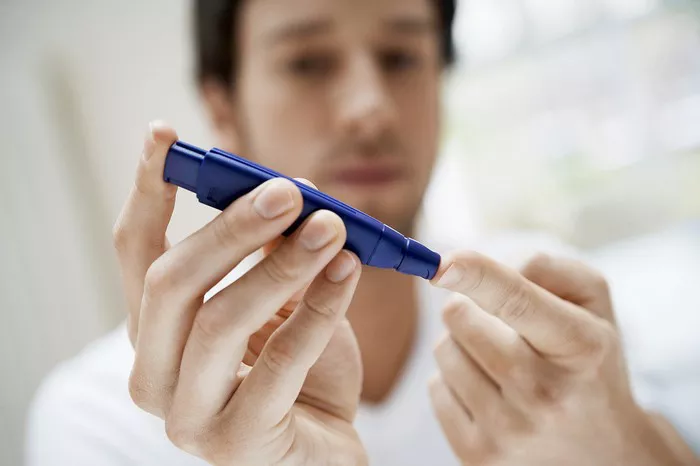In the realm of metabolic health and nutrition, terms like ketosis and diabetic ketoacidosis (DKA) often surface in discussions about low-carbohydrate diets, diabetes management, and metabolic disorders. While both phenomena involve the production and utilization of ketone bodies as fuel substrates, they represent distinct metabolic states with vastly different implications for health and well-being. In this comprehensive article, we delve into the intricacies of ketosis and diabetic ketoacidosis, unraveling their underlying mechanisms, clinical manifestations, and implications for individuals striving to achieve metabolic health and vitality.
Understanding Ketosis: A Metabolic State of Fat Utilization
Ketosis is a natural physiological state characterized by elevated levels of ketone bodies in the bloodstream, typically resulting from reduced carbohydrate intake and increased fat metabolism. In the absence of sufficient carbohydrates for energy production, the body shifts its primary fuel source from glucose to fat, leading to the production of ketone bodies through a process called ketogenesis. Ketone bodies, including acetoacetate, beta-hydroxybutyrate, and acetone, serve as alternative fuel substrates for cells throughout the body, including the brain, muscles, and organs.
1. Mechanism of Ketosis: Ketosis is initiated when glycogen stores in the liver are depleted, signaling the body to transition from glucose metabolism to fat metabolism. Fatty acids derived from dietary fat or adipose tissue are oxidized in the liver through beta-oxidation, generating acetyl-CoA molecules that enter the Krebs cycle to produce energy in the form of adenosine triphosphate (ATP). Excess acetyl-CoA molecules generated during periods of fat metabolism are converted into ketone bodies through ketogenesis, providing an alternative energy source for cells.
2. Physiological Adaptations: During prolonged fasting, carbohydrate restriction, or periods of energy deficit, the body adapts to utilizing ketone bodies as a primary fuel source to preserve glucose for essential functions such as brain function and red blood cell metabolism. Ketosis is a natural physiological response to low carbohydrate availability and is commonly observed during fasting, prolonged exercise, or adherence to a ketogenic diet, which restricts carbohydrate intake to induce ketosis for weight loss or metabolic health benefits.
3. Clinical Manifestations: Individuals in a state of ketosis may experience several physiological changes, including increased fat oxidation, reduced hunger and cravings, improved mental clarity and cognitive function, and enhanced metabolic flexibility. Ketosis is often associated with beneficial outcomes such as weight loss, improved insulin sensitivity, and reduced inflammation, making it a popular strategy for achieving metabolic health and optimizing body composition.
Understanding Diabetic Ketoacidosis: A Pathological Metabolic Derangement
Diabetic ketoacidosis (DKA), in contrast to ketosis, is a potentially life-threatening complication of diabetes characterized by excessively high levels of ketone bodies and acidosis in the bloodstream. DKA most commonly occurs in individuals with type 1 diabetes due to absolute insulin deficiency but can also occur in individuals with type 2 diabetes or other underlying medical conditions that impair glucose metabolism and insulin action.
1. Mechanism of Diabetic Ketoacidosis: DKA develops when insulin deficiency or resistance prevents cells from utilizing glucose for energy, leading to increased fat breakdown and ketogenesis in the liver. In individuals with diabetes, insulin deficiency, whether absolute (as in type 1 diabetes) or relative (as in type 2 diabetes), impairs glucose uptake into cells, resulting in hyperglycemia and metabolic imbalances. Elevated blood sugar levels trigger osmotic diuresis and dehydration, further exacerbating DKA by increasing ketone production and reducing urinary ketone excretion.
2. Clinical Manifestations: DKA is characterized by a constellation of clinical features, including hyperglycemia, ketonemia, metabolic acidosis, dehydration, electrolyte imbalances, and potential complications such as cerebral edema, hypokalemia, and hyperosmolar hyperglycemic state (HHS). Symptoms of DKA may include excessive thirst, frequent urination, nausea, vomiting, abdominal pain, fruity-scented breath (due to acetone), confusion, lethargy, and coma. Without prompt medical intervention, DKA can progress rapidly and lead to life-threatening complications, making it a medical emergency requiring immediate treatment.
3. Risk Factors and Triggers: Several factors predispose individuals to DKA, including insulin deficiency or omission, acute illness or infection, stress, trauma, surgery, pregnancy, medication noncompliance, substance abuse, and excessive alcohol consumption. In individuals with diabetes, missed insulin doses, inadequate carbohydrate intake, insulin pump failure, or intercurrent illness can precipitate DKA by disrupting glucose and ketone metabolism and exacerbating insulin deficiency.
Key Differences Between Ketosis and Diabetic Ketoacidosis
While ketosis and diabetic ketoacidosis both involve the production and utilization of ketone bodies as fuel substrates, they represent distinct metabolic states with different implications for health and well-being. Understanding the key differences between ketosis and diabetic ketoacidosis is essential for individuals seeking to optimize their metabolic health, whether through dietary interventions, lifestyle modifications, or medical management of diabetes and related conditions.
1. Blood Ketone Levels: In ketosis, blood ketone levels are elevated within a physiological range (<0.5 to 3.0 mmol/L), reflecting increased fat metabolism and ketone production in response to reduced carbohydrate intake or increased energy expenditure. In contrast, diabetic ketoacidosis is characterized by excessively high blood ketone levels (>3.0 mmol/L), often exceeding 10.0 mmol/L, accompanied by metabolic acidosis and systemic complications.
2. Acid-Base Status: Ketosis typically maintains normal acid-base balance and pH within a physiological range (7.35 to 7.45), despite elevated ketone levels and increased fat oxidation. In contrast, diabetic ketoacidosis disrupts acid-base homeostasis, leading to metabolic acidosis characterized by a decrease in blood pH (<7.35) and bicarbonate levels, resulting from the accumulation of ketone bodies and organic acids in the bloodstream.
3. Clinical Manifestations: Ketosis is generally asymptomatic or associated with mild physiological changes, such as increased fat oxidation, reduced hunger, and improved cognitive function, without significant clinical consequences. In contrast, diabetic ketoacidosis presents with a constellation of clinical symptoms and systemic complications, including hyperglycemia, ketonemia, metabolic acidosis, dehydration, electrolyte imbalances, and potential organ dysfunction.
4. Underlying Conditions: Ketosis can occur in healthy individuals during fasting, exercise, or adherence to a ketogenic diet, promoting metabolic flexibility and enhancing fat metabolism without adverse effects on health. In contrast, diabetic ketoacidosis is primarily associated with underlying medical conditions such as diabetes, particularly type 1 diabetes, where insulin deficiency or resistance impairs glucose utilization and promotes ketone production in the absence of adequate insulin therapy.
Conclusion: Navigating the Nuances of Ketosis and Diabetic Ketoacidosis
In summary, ketosis and diabetic ketoacidosis represent distinct metabolic states with different implications for health and well-being. Ketosis is a natural physiological response to reduced carbohydrate intake or increased fat metabolism, characterized by elevated blood ketone levels and enhanced metabolic flexibility. In contrast, diabetic ketoacidosis is a pathological condition associated with insulin deficiency or resistance, leading to excessively high blood ketone levels, metabolic acidosis, dehydration, and potential organ failure.
Understanding the differences between ketosis and diabetic ketoacidosis is essential for individuals striving to optimize their metabolic health, whether through dietary interventions, lifestyle modifications, or medical management of diabetes and related conditions. By distinguishing between these two metabolic states and their clinical manifestations, individuals can make informed decisions about their health and well-being, striving to achieve metabolic balance, vitality, and resilience in the face of metabolic challenges.


























